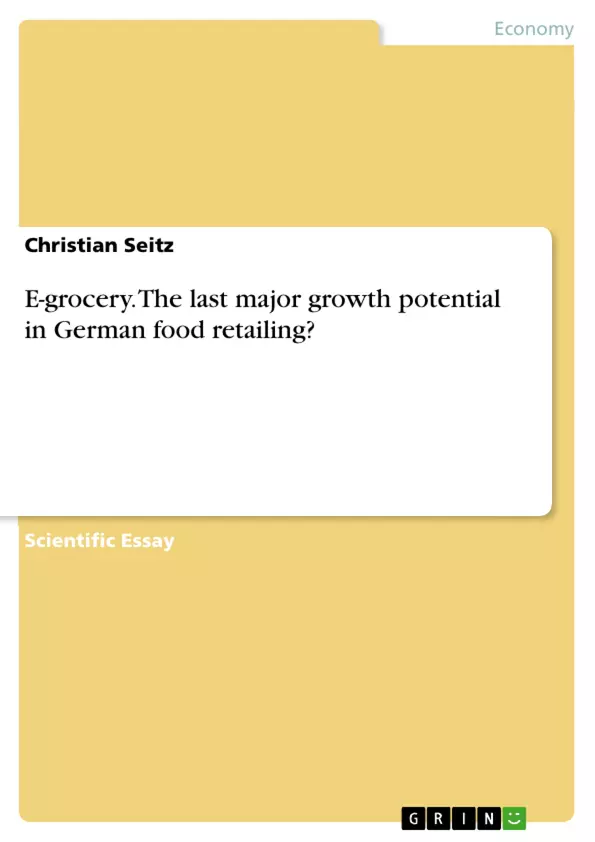In the German food retail business, the new online channel has not yet come to light, in contrast to other European markets. At first glance, it seems that neither the retailers nor the consumers appear to show a significant interest in e-grocery. The reason for German retailers to neglect possibilities to sell groceries online, however, is based on the premise that German consumers would lack the acceptance and interest to do so. Herein, the paper’s objective is to analyze the sales potential for grocery e-commerce in the German food retailing.
Inhaltsverzeichnis (Table of Contents)
- 1 Introduction, problem statement and objective
- 2 The distinctive features of the German food retailing industry
- 2.1 General overview of the German food retailing industry
- 2.2 Characteristics of the market situation in the German food retailing industry
Zielsetzung und Themenschwerpunkte (Objectives and Key Themes)
This paper aims to analyze the sales potential for grocery e-commerce in the German food retailing industry. It explores the reasons behind the slow adoption of e-grocery in Germany despite its success in other European countries. The paper investigates the distinctive features of the German food retailing industry and analyzes the market situation, highlighting factors like market saturation, concentration processes, and fierce price competition.
- Growth potential of e-grocery in Germany
- The distinctive features of the German food retailing industry
- Market saturation and concentration processes in German food retailing
- Fierce price competition and dominance of discounters
- Customer acceptance and interest in e-grocery in Germany
Zusammenfassung der Kapitel (Chapter Summaries)
1 Introduction, problem statement and objective
This chapter introduces the topic of e-grocery and its potential as a growth engine in the German food retail business. It highlights the increasing popularity of online shopping in various sectors but notes that e-grocery has lagged behind in Germany. The chapter provides a brief overview of the challenges faced by e-grocers in the past and discusses the current interest among retailers to re-enter this market.
2 The distinctive features of the German food retailing industry
2.1 General overview of the German food retailing industry
This section provides a general overview of the German grocery market, emphasizing its size and growth. It discusses the importance of traditional stationary retail formats and the increasing market share of convenience stores and discounters. The chapter also presents the structure of the German stationary food retailing sector and highlights the limited role of non-stationary formats, including e-grocery.
2.2 Characteristics of the market situation in the German food retailing industry
This section examines the current market situation in German food retailing, characterized by market saturation, concentration processes, and intense price competition. It discusses the dominance of discounters and their impact on the price structure. The chapter also explores the oversaturation of retail outlets and its effect on market share allocation.
Schlüsselwörter (Keywords)
This paper focuses on e-grocery, German food retailing, market saturation, concentration processes, price competition, discounters, customer acceptance, online shopping, and growth potential.
- Quote paper
- Christian Seitz (Author), 2014, E-grocery. The last major growth potential in German food retailing?, Munich, GRIN Verlag, https://www.grin.com/document/274789



